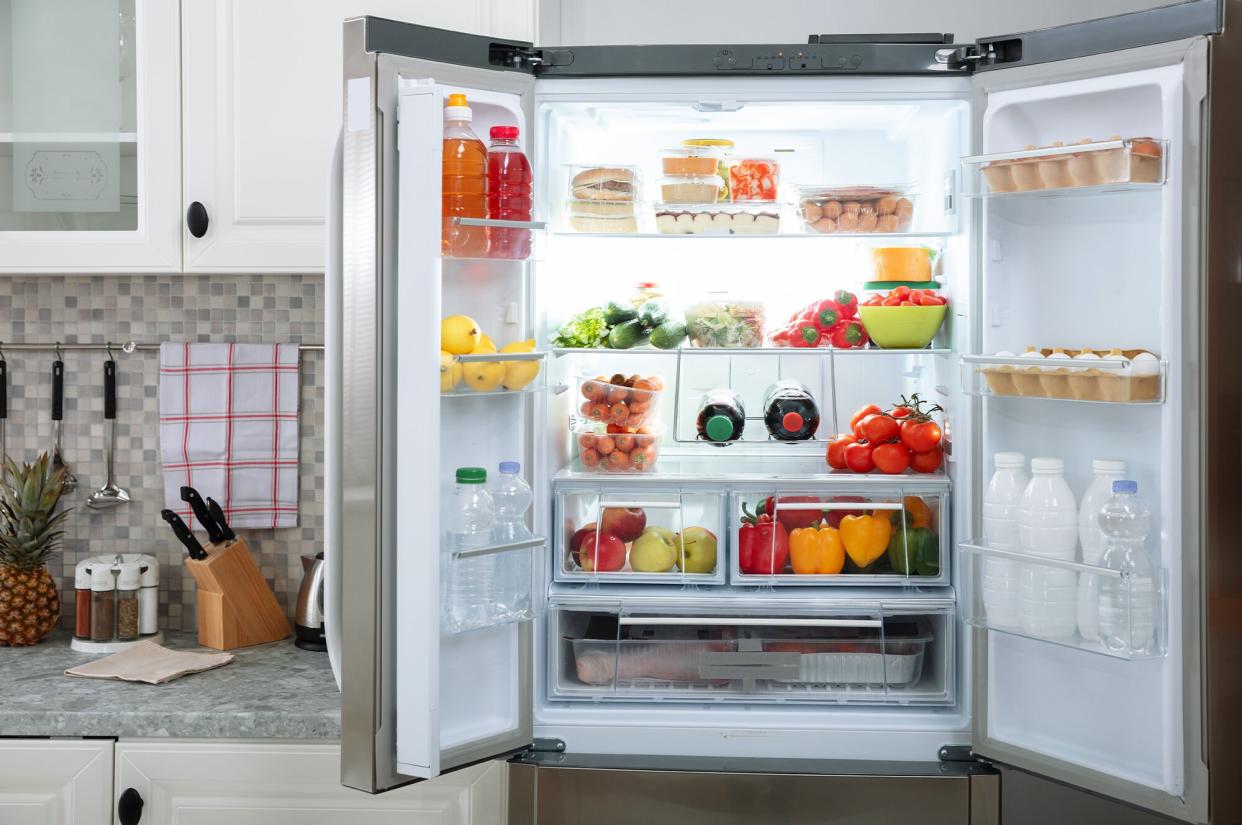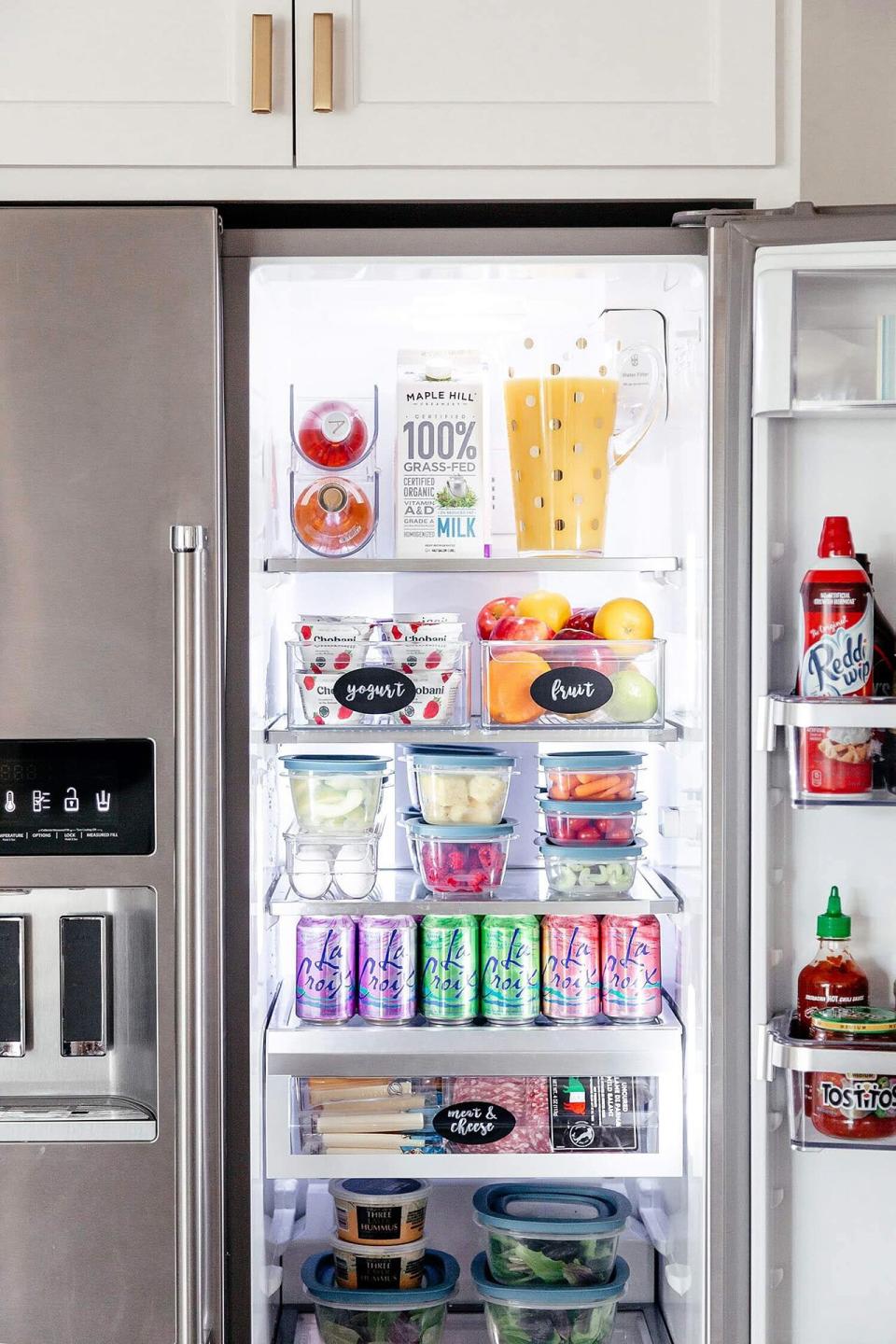How to Organize Your Refrigerator and Maximize Your Food Storage Space in 5 Easy Steps

Andrey Popov / Getty Images
The refrigerator is the home base of the kitchen. It's a place that you want to be in and out of quickly, and that's true whether you're grabbing ingredients for a family dinner or you're on the hunt for a snack. An organized refrigerator is not only aesthetically pleasing, but it also adds efficiency, and in some cases even promotes better health. To mine the best fridge organization tips, we asked chef Stephanie Nass and expert organizer Cait Sirianni of NEAT Method Philadelphia to offer their insights, including where to store raw meat and when it's time to break out the label maker.
Related: Martha's Top Kitchen Organizing Tips
1. Empty Your Fridge
Like with most organization projects, it's best to start from scratch. Empty out as much of the refrigerator as possible; spread packaged products across the kitchen countertops or clean surfaces so you can see everything before deciding what deserves a place back in the fridge in a thorough edit. "Toss expired food," advises Sirianni. "Especially those old condiments and forgotten frozen meals, [because] that makes room for items you're currently eating."
2. Map Out Your Fridge Layout
When mapping out the new refrigerator layout, it's important to consider two things: First and foremost, remember to weigh the health and safety measures of certain foods against where they'll live in the fridge. Then, consider what you and your family reach for most often—and organize accordingly.
Place Raw Foods on the Lowest Shelf
"Raw poultry should always be at the very bottom of the fridge," says Nass. "It can carry salmonella, so put it below everything else so it cannot leak onto any ready-to-eat foods."
Create Zones
Next, consider the most frequent reasons you or your family open the refrigerator and create zones or compartments for easier access to these often-used items. "Create a snack zone, a drink zone, a produce zone, and [a] meal prep zone. Remember, most refrigerators can adjust the shelving to make space for your specific needs," says Sirianni. That way, you're not removing pickles and condiments at the end of the day to get to that cold-water bottle that gradually made its way to the back of the fridge.
3. Store All Food in Reusable Containers
It's easy to stick half-eaten takeout into the refrigerator and forget about it, but that thinking is the reason why you need to learn how to organize your refrigerator in the first place. Make your fridge work for you—anything going into it should be conforming to your storage system—so be ready with your own containers. "Store food in reusable containers," offers Nass. "From my restaurant days, I'm most comfortable using quart containers—they stack nicely, and they're clear so you can see inside."
Get Rid of Excess Packaging to Save Space
Another important aspect of organizing your refrigerator comes from breaking down some of the excess packagings after grocery shopping. "Remove packaging from individually packaged foods like yogurt, string cheese, and drinks," says Sirianni. "They'll take up less space, and it will help you visually track inventory. Where necessary, use acrylic drawer dividers, open bins, and Lazy Susans to separate and contain categories."

NEAT Method Philadelphia
4. Put New Groceries Towards the Back of the Fridge
Part of maintaining an organized refrigerator happens when you're nowhere near the fridge, but while you're perusing grocery store aisles. Too often, when groceries are brought home, the new supply goes right in front. But by stocking things back-to-front, expired or soon-to-expire products can be resurfaced as a reminder to either discard or use them before they go bad; this will help keep a clean and organized setup.
This applies to prepared leftovers, too: "Stick the dates of preparation on the containers, and push to the front of the fridge whatever containers are oldest to use first," says Nass.
5. Add Labels
Just because you have taken the time to design a new organizational plan for the refrigerator doesn't mean the rest of the family will immediately understand. So, make sure your system is crystal clear: By labeling different zones, anyone opening the fridge can search for the right label, rather than tearing through carefully arranged shelves. "Label categories with damage-free chalkboard stickers [to] keep everyone in your family on the same page," says Sirianni. "Some of our go-tos include bread, cheese, condiments, dressings, and fruit. Unpacking groceries will never be easier!"
